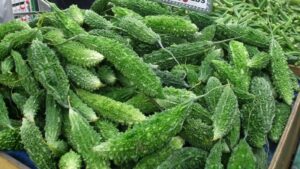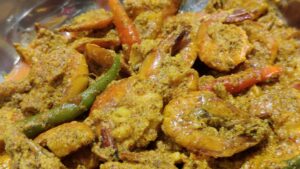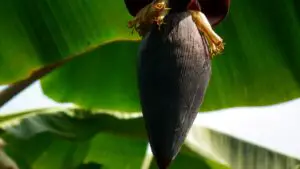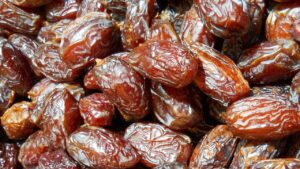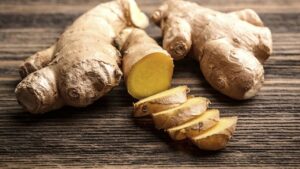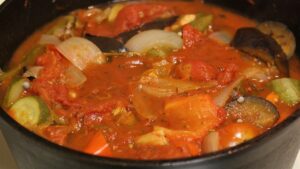Have you ever wondered about the incredible banana stem and its role in Indian cooking?
It’s like a hidden gem in the kitchen, cherished by both Bengali and South Indian culinary traditions.
Let’s embark on a journey to uncover the amazing ways this simple ingredient adds flavor, texture, and boundless creativity to Indian cuisine.
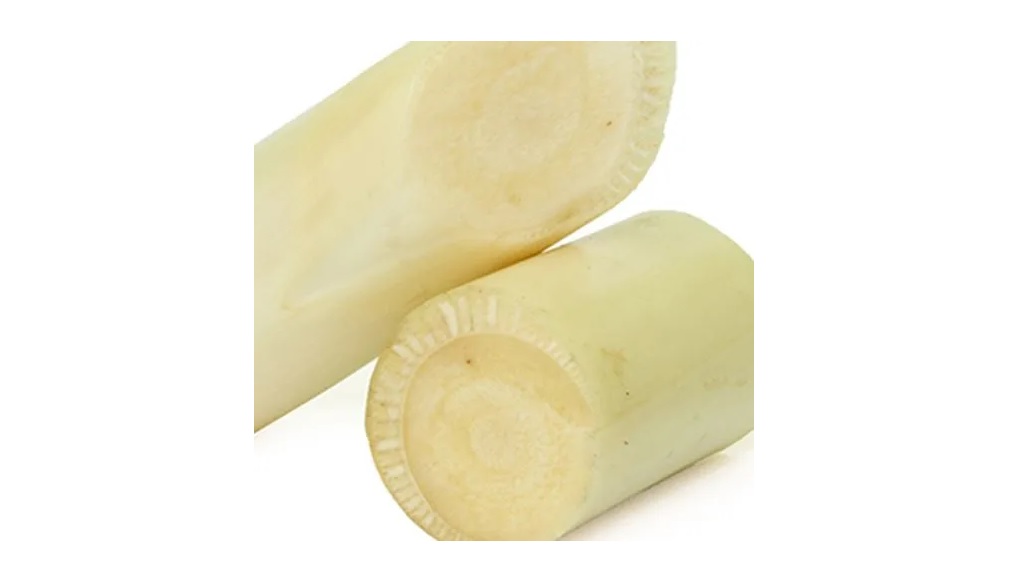
Key Takeaways:
- Banana stems, often overlooked, belong to the Musa genus and are an edible part of the banana tree.
- They are available year-round and vary in size, with a tough outer layer and an edible core.
- Banana stems are versatile ingredients in Bengali and South Indian cuisines, known for their crisp texture and mild flavor.
- Bengali dishes like “thor bhaja” and “banana stem pulao” showcase the stem’s versatility, often incorporating coconut for added flavor.
- In South Indian cooking, banana stems are used in various dishes, including stews, snacks, and buttermilk beverages, with a focus on coconut and curry leaves for flavor.
Using Banana Stem in Bengali & Indian Cooking
Banana stems, often overlooked yet highly versatile, hold a special place in both Bengali and South Indian cuisines.
Their crisp texture and mild flavor make them a delightful addition to a range of dishes, and they have a knack for harmonizing with diverse spices.
Here’s a closer look at how these culinary traditions celebrate the banana stem:
Bengali Culinary Treasures:
In Bengal, one popular preparation is “thor bhaja” or fried banana stem. Sliced banana stem is seasoned with a pinch of salt, turmeric powder, and black cumin seeds before being pan-fried to perfection. For an extra touch of indulgence, a dollop of ghee takes this dish to another level.
Some Bengali households elevate the dish by incorporating “bari,” fried lentil dumplings, adding an interesting texture and flavor dimension.
To create a unique and subtly sweet profile, grated coconut is occasionally sprinkled over the dish, showcasing Bengali cuisine’s love for contrasting flavors.
Banana stem’s versatility shines in the creation of hearty banana stem curry. Here, the addition of coconut milk near the end of the cooking process eliminates the need for sugar, resulting in a uniquely delicious and complex flavor.
Bengali Elegance – Banana Stem Pulao:
The culinary roots of banana stem pulao trace back to Bangladesh, where a special rice variety called “gobindobhog rice” takes center stage.
This fragrant rice, combined with generous portions of cashews and raisins, adds both elegance and visual appeal to this traditional Bengali dish.
The dish’s richness reaches its pinnacle when ghee is introduced, turning it into a must-try delight that can easily rival the popularity of pulaos across India.
South Indian Culinary Mastery:
In South India, banana stem, known as “Vaazhai Thandu” or “Vaazhapindi,” is a star ingredient used in various delectable ways.
It can be found in dishes cooked with an array of spices and lentils, fried to create crispy snacks, mixed with an assortment of vegetables, or even stewed in coconut milk-based curries.
A special banana stem stew graces the tables, traditionally served over a bed of steamed rice, offering a wholesome and satisfying meal.
The refreshing “banana stem buttermilk” beverage, created by mixing juice extracted from sliced banana stems with buttermilk and a pinch of salt, is a testament to South India’s culinary creativity.
Pickles, Desserts, and More:
Talented pickle makers explore the sweet and sour realms with banana stem, crafting khatta-meetha (sweet-sour) pickles that delight the palate.
Banana stem’s adaptability even extends to desserts, where it can be transformed into meethai, showcasing the culinary innovation in these regions.
Commonalities and Differences:
Both Bengali and South Indian cuisines share a love for banana stems, though they incorporate them differently. South Indian dishes often feature curry leaves and coconut as essential ingredients, infusing a distinct regional flavor.
On the other hand, Bengalis, especially those with roots in Bangladesh (known as Bangals), favor grated coconut for adding sweetness to various vegetable dishes. They also employ coconut milk at the end of preparations to enhance both flavor and presentation.
Banana Stems Cooking Tips
Selecting Fresh Banana Stem: Choose a fresh banana stem that feels firm and has a bright, greenish appearance. Avoid stems that appear dry, discolored, or damaged.
Preparing the Banana Stem: Banana stems have a fibrous outer layer that needs to be removed. To do this, first, cut the stem into manageable sections.
Then, gently peel off the outer layers to expose the tender core. You can use a knife or your fingers for this process. Ensure that you remove all the tough fibers, as they are not edible.
Chopping: After removing the fibers, finely chop the banana stem into small, bite-sized pieces. The finer you chop it, the quicker it will cook and blend with other ingredients.
Immediate Use: It’s best to use the chopped banana stem immediately or within 1-2 days to maintain its freshness and flavor. If you need to store it, keep it in an airtight container in the refrigerator.
Avoid Browning: To prevent the chopped banana stem from turning brown, you can soak it in water with a little lemon juice or buttermilk. This will help retain its natural color.
Cooking Methods: Banana stem can be used in various cooking methods. It can be sautéed, steamed, stir-fried, or even deep-fried. Experiment with different techniques to see which one suits your recipe best.
Spices and Seasonings: Banana stem has a mild flavor and readily absorbs the flavors of spices and seasonings. Commonly used spices include mustard seeds, turmeric, red chili powder, curry leaves, and grated coconut. These can add depth and complexity to your dish.
Balancing Flavors: When cooking with banana stem, balance the flavors by adding elements of sweetness, sourness, and saltiness. Ingredients like jaggery, tamarind, and salt can help achieve this balance.
Timing: Keep an eye on the cooking time. Banana stem cooks relatively quickly, so be cautious not to overcook it, as it may turn mushy.
Ghee or Oil: Using a small amount of ghee (clarified butter) or oil can enhance the flavor and texture of your banana stem dishes. Ghee, in particular, can add richness to the flavors.
Garnishes: Garnish your banana stem dishes with fresh herbs like coriander leaves or curry leaves to add a burst of freshness and aroma.
Experiment: Don’t hesitate to experiment with different recipes and combinations. Banana stem pairs well with various vegetables, lentils, and spices, so get creative with your Indian dishes.
By following these tips, you can master the art of cooking with banana stem and create delicious, flavorful Indian dishes that showcase this unique ingredient.
Is Banana Stem Tasty?
Yes, banana stem is indeed tasty. It offers a unique combination of a mild, refreshing flavor and a pleasant, slightly crisp texture.
The beauty of banana stem lies in its ability to absorb and complement the flavors of various spices and ingredients, making it a versatile and delicious addition to a wide range of dishes.
When prepared well, it can add a delightful and refreshing dimension to your meals, making it a favorite in Bengali and South Indian cuisines.
Questions & Answers:
Which Part of the Banana Stem is Best?
The outer part of the banana stem is hard, fibrous and not edible. It must be removed. The inner portion is pale-green and flavoursome.
How Do You Know When a Banana Stem is Cooked?
After the banana stem is done, it feels a little soft though not mushy.
What Are the Best Recipes for Banana Stem?
I have already mentioned the best and most popular banana stem recipes. You can prepare banana stems either in Bengali or South Indian styles. Try out both to flirt with your taste buds.
Conclusion
In conclusion, banana stems, often overlooked, are a versatile and delicious ingredient in Indian cuisine.
With their mild flavor and unique texture, they find a special place in Bengali and South Indian dishes.
By following cooking tips and techniques, you can master the art of cooking with banana stem and unlock its culinary potential, creating delightful and refreshing dishes.

